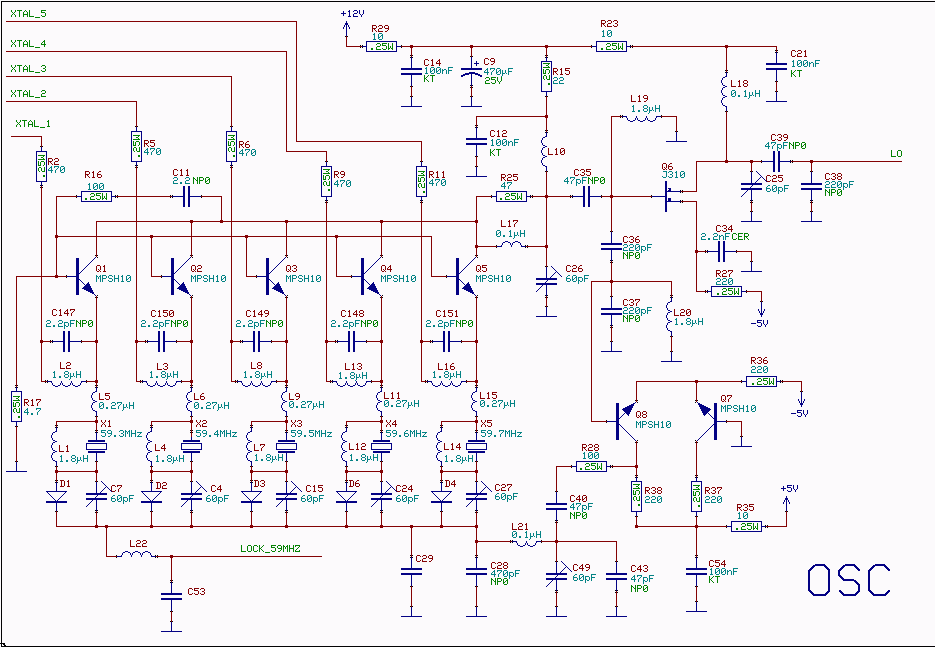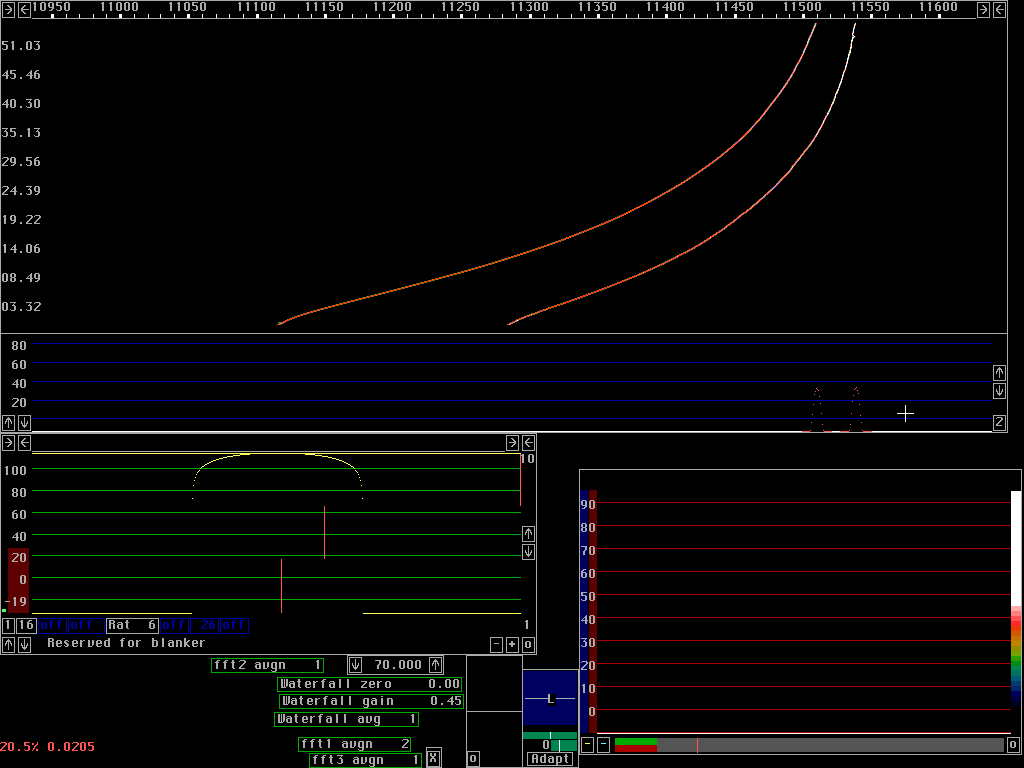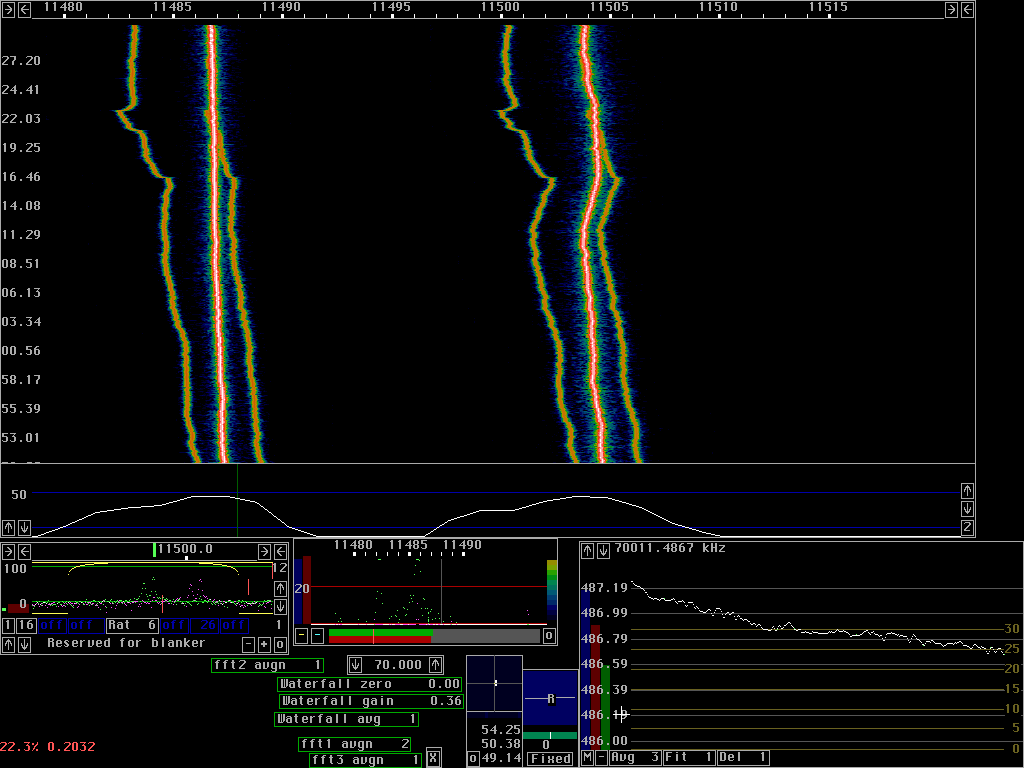A series resonance X-tal oscillatorThe oscillator is the same as the oscillator used for conversion from 10.7 to 2.5 MHz. but there is no frequency divider at the output. The schematic diagram is given in fig. 1.An oscillator can be seen as an amplifier which has feedback through a filter. The amplifier of a series resonance oscillator must have both a low input impedance and a low output impedance, preferrably well below the series resonance impedance of the X-tal, to preserve the selectivity associated with the high Q of the X-tal itself. The frequency is adjusted with a trimmer in series with the X-tal.
|

The frequency is adjusted with a trimmer in series with the X-tal.
Select(input)
Clock (input)
Data (input)
Status (output, open collector)
These pins are intended to be connected directly to the parallel port of the PC for small systems, one separate data pin for each select input with all the other pin's in parallel. Larger systems need a decoder to convert 6 pin's to one of 64 pin's.
The frequency control is level controlled and all wires are well decoupled to avoid sending interference into the oscillator. The user program is responsible for setting the d-type flip-flops right so only one of the 74HC4053 outputs is at minus 5 volts while the other four are at plus 5 volts.


The long term stability is a thermal problem, the short term stability is affected by several factors. Since so many signals are present simultaneously in fig. 4 it is possible to separate the different factors to some extent. The ESG1000 is a more stable generator than the 8657A. It has a slightly higher amplitude that makes the traces white while the 8657A traces are red.
The difference between the two ESG1000A traces represents the difference in frequency drift between the two RX70 local oscillators. Since one unit has about 10Hz/deg and the othe a small temperature coefficient one can find that the temperature during the 40 minutes varied by about 0.2 degrees. Fig 4 is the best of about 10 measurements, the reason for the temperature changes is mainly variations in outdoor wind speed. Wind speed was very low during this measurement.
The 8657A generators are sensitive to the mains voltage. They respond in a similar fashion to mains voltage variations although one is a little better than the other.
The short term instabilities peak at about 0.2Hz/min as one can see in the AFC graph. It is obvious that some contribution is from the ESG1000A generator but it is hard to quantify it well. The corresponding value for RX10700 is 0.02Hz/min which leads to an expected value of about 0.1 Hz/min for the RX70 unit considering the 4.5 ratio between the LO frequencies.
Here is some information about state of the art VHF crystal oscillators
